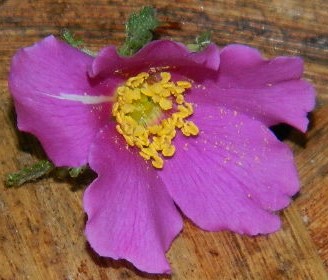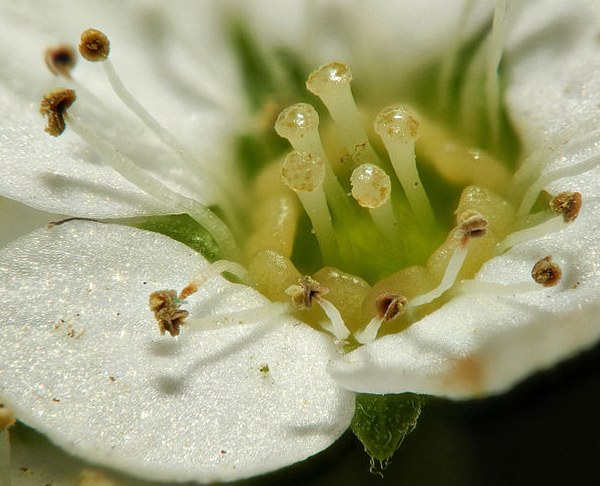I have long believed that roses never produce nectar. That’s what I’ve read many times. Insects that visit roses are there to collect pollen.
This fact seems to explain why the “female” flowers of Rosa setigera produce some pollen. Without pollen, these flowers might be ignored.
Heslop Harrison (1921) wrote, “Unless the shining secretion on the exposed disk of the Eucaninae, Agrestes and Tomentosae is nectar the Rosae do not secrete that substance.” He knew much more about roses than I ever will, so I had no reason to doubt him.
http://bulbnrose.x10.mx/Roses/breeding/HeslopHarrison/HeslopSpecies1921.html
But sometimes knowledgeable people are overly broad in their pronouncements. This may be an example, because in describing the flower of Rosa minutifolia, Engelmann (1882) mentioned, “a thick nectariferous ring contracting its opening…”
http://bulbnrose.x10.mx/Roses/breeding/EngelmannRoses1887.html
I have not seen this species, so I can neither confirm nor contradict Engelmann’s description. Has anyone noticed nectar on the disks of R. minutifolia or its close relatives?
And while I’m on the subject of R. minutifolia, Engelmann also wrote, “This species is quite peculiar among its American congeners, and even among the roses of the Old World, so that it is difficult to determine its true position. In aspect and habit it comes nearest to the Pimpinellifoliae on account of its single bractless flowers, its numerous acicular spines, and its small leaves; but it recedes in its pinnatifid calyx-lobes.”
Modern DNA evidence agrees in placing this species near the diploid Pimpinellifoliae. And it is interesting to note that DNA also places R. roxburghii near the same group. Someday it may seem reasonable to combine Pimpinellifoliae, Minutifoliae and Microphyllae as a single group.

